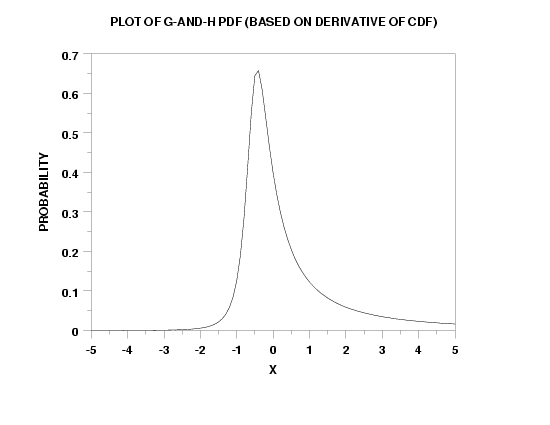

|
NUMERICAL DERIVATIVEName:
If Dataplot cannot compute the analytic derivative of a function, you can use the NUMERICAL DERIVATIVE instead. This command is limited to univariate functions (i.e., it does not compute partial derivatives).
where <function> is the name of a previously defined function; <var> is the name of the variable with respect to which the derivative is taken; and <resp> is a variable of the same length as <var> where the evaluated derivatives are stored.
With this syntax, the derivative variable (<var>) must be defined
for one or more points. The derivative is calculated at each of
these points and the resulting value is put in the corresponding
element of
FOR <var> = <value> where <function> is the name of a previously defined function; <var> is the name of the variable with respect to which the derivative is taken; <value> is a number or parameter at which the derivative is to be evaluated; and <resp> is a parameter of length 1 where the evaluated derivative is stored. This syntax is similar to Syntax 1. However, the FOR clause identifies a single point at which the derivative is to be evaluated and <var> does not need to be pre-specified.
LET XDERV = NUMERICAL DERIVATIVE 3*X**2 -8*X + 4 WRT X
LET X = SEQUENCE -5 0.1 5
.
. Compute the PDF of a G-and-H distribution by computing the
. derivative of the G-and-H CDF function.
.
LET G = 1.5
LET H = 0.3
LET FUNCTION F = GHCDF(X,G,H)
LET X = SEQEUNCE -5 0.1 5
LET Y = NUMERICAL DERIVATIVE F WRT X
Y1LABEL PROBABILITY
X1LABEL X
TITLE PLOT OF G-AND-H PDF (BASED ON DERIVATIVE OF CDF)
PLOT Y VS X

Date created: 2/3/2004 |